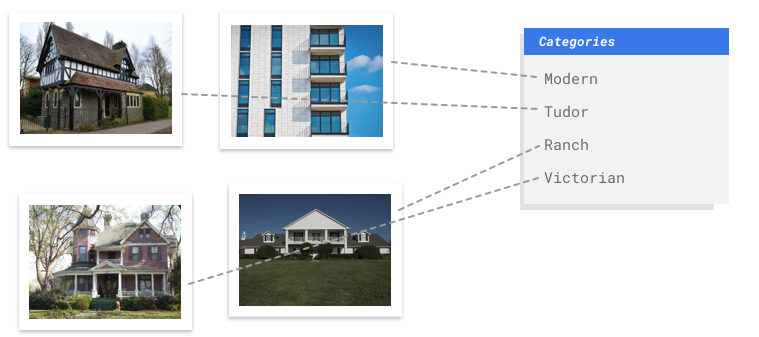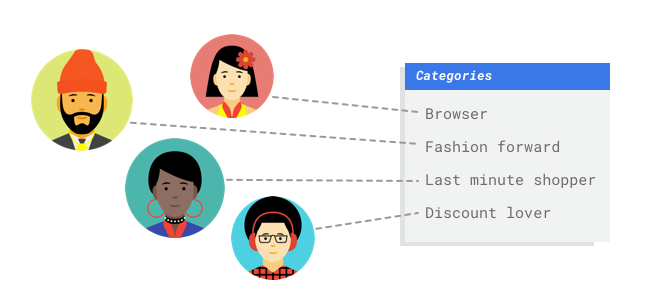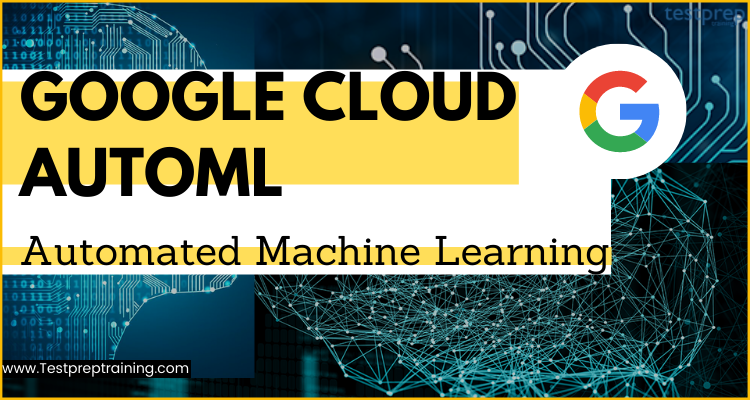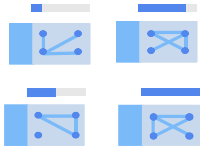In recent years, machine learning has become an integral part of modern technology. From personalized recommendations on streaming platforms to fraud detection in financial services, machine learning models are being used to solve a wide range of complex problems. However, building these models can be a time-consuming and resource-intensive process, requiring expertise in both data science and software engineering.
This is where AutoML comes in. AutoML, or Automated Machine Learning, is a set of tools and techniques that automate the process of building machine learning models. Google Cloud AutoML is one such platform that provides an end-to-end solution for building custom machine-learning models, without requiring extensive knowledge of machine-learning algorithms and techniques.
With Google Cloud AutoML, businesses of all sizes can leverage the power of machine learning to gain insights from their data and improve their products and services. In this blog, we will explore the various features and capabilities of Google Cloud AutoML, and how it can help businesses build powerful machine-learning models with ease.
Glossary of Google Cloud AutoML: Automated Machine Learning Terminology
Here is a glossary of some key terms related to Google Cloud AutoML and automated machine learning in general:
- AutoML: Automated machine learning, which involves using tools and techniques to automate parts of the machine learning process.
- Training data: Data used to train a machine learning model. It is typically labeled data, meaning that each example has a known output value.
- Validation data: Data used to evaluate a model during training to ensure it is not overfitting. It is also typically labeled data.
- Testing data: Data used to evaluate a model after training to estimate its real-world performance. It is typically unlabeled data.
- Supervised learning: A type of machine learning where the training data includes both input features and output labels, and the goal is to learn a mapping from inputs to outputs.
- Unsupervised learning: A type of machine learning where the training data includes only input features, and the goal is to find patterns or structure in the data.
- Semi-supervised learning: A type of machine learning where the training data includes some labeled examples and some unlabeled examples. The goal is to learn a model that can generalize to new, unlabeled examples.
- Transfer learning: A technique where a model is first trained on a large dataset, and then fine-tuned on a smaller dataset with similar characteristics. This can improve performance and reduce the amount of labeled data needed.
- Hyperparameters: Parameters of a machine learning model that are set before training and control aspects of the learning algorithm, such as the number of hidden layers in a neural network or the learning rate of an optimizer.
- Model selection: The process of choosing the best machine learning model for a given task, based on performance on validation or testing data.
- Model evaluation: The process of measuring a model’s performance on validation or testing data, using metrics such as accuracy, precision, recall, and F1 score.
- Model deployment: The process of using a trained machine learning model to make predictions on new, unseen data.
What is Google Cloud AutoML?
Cloud AutoML is used for generating and training models with less technical effort. This helps in rapidly prototyping models and discovering new datasets before investing in development when you need the flexibility of a custom training application. Let’s understand this using an example.
Assume that you’re a soccer coach, you work in the marketing department of a digital shop, you’re working on an architecture project recognizing building kinds, or your company has a contact form on its website. Manually curating movies, photographs, texts, and tables is time-consuming and laborious. Isn’t it easier to teach a computer to recognize and mark the content automatically?
Check the following examples,
Image:
You work with an architectural preservation board in your city, which is seeking to find communities with a unified architectural style. You have hundreds of thousands of home pictures to sort through, but trying to categorize them all by hand is tiresome and error-prone. A few hundred of them were labeled by an intern a few months ago, and no one has touched them since. If you could just educate your computer to do this for you, that would be great!

Tabular:
You work for a digital retailer’s marketing department. You and your team are working on a customer persona-based targeted email program. You’ve finished the personas and are ready to send out the marketing emails. You must now develop a system that categorizes customers into personas based on their retail preferences and spending habits, even if they are new customers. To enhance consumer involvement, you should also be able to predict their purchasing habits so that you can send them emails at the most optimal time.

AutoML comes with various products let’s check them out.
Google Cloud AutoML: Types
The model types covered in the Google Cloud AutoML includes:
1. Vertex AI
Vertex AI is used for creating, deploying, and scaling ML models faster using trained and custom tooling inside a unified AI platform. This uses ML tools that power Google and helps in deploying more models with fewer lines of code needed for custom modeling. Further Vertex AI is used for:
- Training models without code, minimal expertise required
- Creating advanced ML models with custom tooling
- Controlling models with confidence
 Vertex AI working
Vertex AI working
To achieve the desired outcome, Vertex AI uses supervised learning challenges. The algorithm and training methods vary depending on the data type and use scenario. Further, machine learning is divided into several subcategories, each of which solves a distinct problem and operates under various restrictions. For example,
Image:
You use sample photos tagged with labels for classification or annotated with labels and bounding boxes for object detection to train, test, and validate the machine learning model. You may train a model to recognize the patterns and material that you care about in photographs using supervised learning.
Tabular:
Vertex AI trains a machine learning model to make predictions on new data using tabular (formatted) data. Your model will learn to predict one column from your dataset, called the target. The model will learn patterns from a number of the other data columns, which are termed features. By adjusting the target column and training variables, you can develop several types of models with the same input attributes.
Text:
You can use Vertex AI to accomplish supervised learning. This involves teaching a computer to recognize patterns in data that have been tagged. You may train an AutoML model to recognize material that you care about in-text using supervised learning.
Workflow of Vertex AI
Vertex AI has a basic machine learning workflow:
1. Collecting the data:
Here, you have to decide what you require for training and testing your model depending on the output you want to accomplish.
2. Preparing your data:
In this step, you have to ensure that the data is properly formatted and labeled.
3. Training:
In this, you have to apply and set parameters for creating your model.

4. Evaluating:
Go through the model and examine model metrics.
5. Deploying and predicting:
In this step, you can make your model available for use. This covers:
1. Batch Predictions
Batch prediction is effective for producing a large number of predictions at once. However, this is asynchronous, which means that the model will not deliver a JSONL file containing prediction values until it has processed all of the prediction queries.
2. Online Predictions
Using a REST API, deploy your model to make it available for prediction requests. Online prediction is synchronous (real-time), which means it will immediately produce a forecast, however, each API call can only accept one prediction request. If your model is part of an application and elements of your system rely on quick prediction turnaround, online prediction is a good option.
2. Image data
AutoML uses machine learning for examining the content of image data. Moreover, this can be used for training an ML model for classifying image data or discovering objects in image data. This can be specified as:
- Firstly, a classification model is for examining image data and returning a list of content categories implemented to the image. For example, you can train a model that classifies images as containing a cat or not containing a cat.
- Secondly, an object detection model is for examining your image data and returns observations for all objects found in an image. This includes a label and bounding box location for every object. For example, you can train a model for finding the location of the cats in image data.
3. Video data
AutoML uses machine learning for examining video data for classifying shots and segments, or for detecting and tracking multiple objects in your video data. This can be specified as:
- Firstly, a classification model is for examining video data and returning a list of categorized shots and segments. For example, you can train a model that examines video data for recognizing if the video is of a soccer, baseball, basketball, or football game.
- Secondly, an object tracking model is for examining video data and returning a list of shots and segments where these objects were discovered. For example, you can train a model that examines video data from soccer games for recognizing and tracking the ball.
- Lastly, an action recognition model is for examining video data and returning a list of categorized actions with the moments the actions take place. For example, you can train a model that examines video data for identifying the action moments involving a soccer goal, a golf swing, a touchdown, or a high five.
4. Text data
AutoML uses machine learning for examining the structure and meaning of text data. This can also be used for training an ML model for classifying text data, extracting information, or understanding the authors’ sentiment. Further, this can be specified as:
- Firstly, a classification model is for examining text data and returning a list of categories that are implemented to the text found in the data. However, Vertex AI provides both single-label and multi-label text classification models.
- Secondly, an entity extraction model is for inspecting text data for known entities referenced in the data. And, further labels those entities in the text.
- Lastly, a sentiment analysis model is for inspecting text data and identifies the convincing opinion inside it, especially for deciding a writer’s attitude as positive, negative, or neutral.
5. Tabular data
Cloud AutoML uses machine learning for examining the content of tabular data. This can also be used for training an ML model for utizling regression to discover a numeric value. Or using classification for predicting a categorical outcome from your tabular data. Further, this can be specified as:
- Firstly, a regression model is for examining tabular data and returning a numeric value. For example, you can train a model for estimating the value of a house.
- Secondly, a classification model is for examining tabular data and returning a list of categories explaining the data. For example, you can train a model for predicting whether the purchase history for a customer projects that they will buy a subscription or not.
- Lastly, a forecasting model (Preview) uses multiple rows of time-dependent tabular data from the past for predicting a series of numeric values that expands into the future. For example, a retail organization can improve its supply chain by lowering the chance of overstocking or selling out of that product by forecasting future product demand.
Final Words
Above we have gained knowledge about the Google Cloud AutoML (Automated Machine Learning) by understanding its overview and types using examples. However, this service is providing benefits to many top companies by training high-quality custom machine learning models with the least effort and machine learning skills.


 Vertex AI working
Vertex AI working
